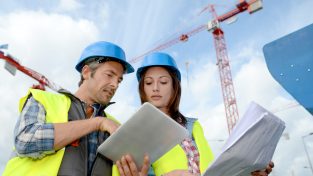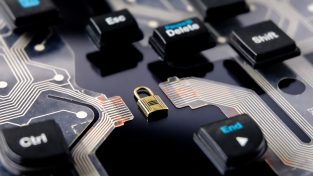Welcome to HxGN Radio. This is you host Monica Miller Rodgers. Today’s podcast is brought to you by Leica Geosystems. Revolutionizing the world of measurement and survey for nearly 200 years, Leica Geosystems creates complete reality capture solutions for professionals across the planet. Known for premium products and innovative solution development, professionals in a diverse mix of industries trust Leica Geosystems for all their geospatial needs. With precise and accurate instruments, sophisticated software and trusted services, Leica Geosystems delivers value everyday to those shaping the future of our world.
In today’s episode we are talking to Migi Rutschmann and Hubi Waibel of Leica Geosystems monitoring business about a new innovation in monitoring, VADASE.
MR: Thank you both for being here with us today.
Thanks Monica glad to be here.
Glad to be here Monica, thanks.
MR: So the VADASE or velocity and displacement autonomous solution engine, now that’s a mouth full. What is this new innovation all about?
VADASE as you say, is a synonym for velocity and displacement autonomous solution engine or, as the Italian would say:“VADASE” means “walking on your own”. As such, this solution is fully autonomous and works in real time. VADASE is independent of any local, regional or global GNSS RTK correction services. These are not needed. VADASE streams velocity and displacement data, at a high-frequency rate of up to 20 Hz. The solution works on-board Leica Geosystems monitoring and reference station GNSS receivers, namely our GR and GM family including now the new recievers with 555 channels. Here we are talking about GR30, GR50 and GM30. It detects fast relative displacements in real-time, in 3D and with high frequency on a standalone GNSS receiver.
MR: Now VADASE can be used locally, regionally or globally. So Migi can you tell us what applications are using you seeing VADASE being used in today?
Related to country wide Reference Station Networks, stability of the individual Stations are very important to make sure that a precise and reliable correction service is delivered. A lot of users such as surveyors, machine control systems for construction, fleet management in mines, guidance systems for agriculture applications are depending on these services. In the case of a country wide seismic event a movement of some stations in the network would immediately be detected and corrective actions can take place.
In construcion for example, you can avoid expensive damages. An unexpected fast change of a reference station can be immediately detected and the operating machine control systems can be stopped.
GNSS are often the stable frame for large GNSS monitoring installation on bridges, dams and airports. In this case, fast movement will be detected and the distribution of wrong results can be blocked stright away.
MR: So with VADASE you are detecting fast movement in real time, which is a difference than traditional GNSS, but how else is it different?
VADASE uses only GNSS satellite broadcasted information. Like the velocity information from single-difference GNSS observations. It computes fast relative 3D movements from the observed and processed velocities.
VADASE works autonomous and standalone, in real-time and up to 20 Hz, without any reference correction service .
The displacements and velocities can be visualized in real-time and in case of pre-defined tolerance is exceeded, the system automatically notifies the user
In order to detect these displacements a velocity in the range of 10 to 20 mm per second is required, which is like the speed of an ant.Such dynamic changes might happen in an unpredictable and spontaneous change of manmade structures like a bridges, dams, towers or natural events like landslide or even seismic events. VADASE gives you instant information about the impact to nature and/or infrastructure.
MR: That is pretty impressive, and another unique part of this new technology is it was actually founded within an academic partnership. So, Hubi, could you tell us more about that?
Alright. This new and innovative method was productized with Professor Mattia Crespi and his team at the University of Rome called “La Sapienza”, and it received already two awards at the international level. We at Leica Geosystems have seen the value and potential of this new approach and, and we optimized the processing and implemented the algorithms onboard our Leica Geosystems reference station and monitoring receivers, where now its running in real time.
MR: There’s definitely a lot of potential with the real time. So where do you gentlemen see this VADEASE, this new technology taking the industry in the future?
So, VADASE works on any Leica Geosystems reference or monitoring GNSS receiver and delivers additional information. It works fully autonomous even if the correction services and communications are down. The information about the local situation is logged on board the GNSS sensor. It is a software based solution, which is important, and no additional hardware is required. VADASE works with multiple constellations like GPS, like GLONASS or BEIDOU.
What we see is Leica VADASE provides new opportunities for applications where a continuous real time GNSS differential correction stream for absolute positioning cannot be reliably available. We provide information for a first and fast potential risk analysis and disaster mitigation, where only post processing solutions used to be applicable.
As Hubi already mentioned, with high frequency up to 20 hertz, VADASE will detect the changes fast and in real time. VADASE provides an in-depth look into fast movements and displacements of various activities and structures. For example, earthquakes, volcanoes, landslides, bridges, skyscrapers and dams. With the ability to complement existing Leica Geosystems GNSS and integrate into early-warning systems, VADASE allerts in order to avoid potential disasters and therefore protect lives.
MR: Well, it is certainly a valuable technology that Leica Geosystems has developed here. I want to thank both of you for coming on and sharing your insights with us today.
Thank you Monica.
Thanks a lot Monica.
For our listeners you can learn more about autonomous monitoring at leica-geosytems.com. Tune into more episodes from HxGN Radio on iTunes, SoundCloud or Stitcher Radio. Thank you for listening.













![[PODCAST]: Detecting Fast Movements in Real Time](https://blog.hexagon.com/wp-content/uploads/2016/08/artworks-000286009241-mlx0an-t500x500-500x391.jpg)



